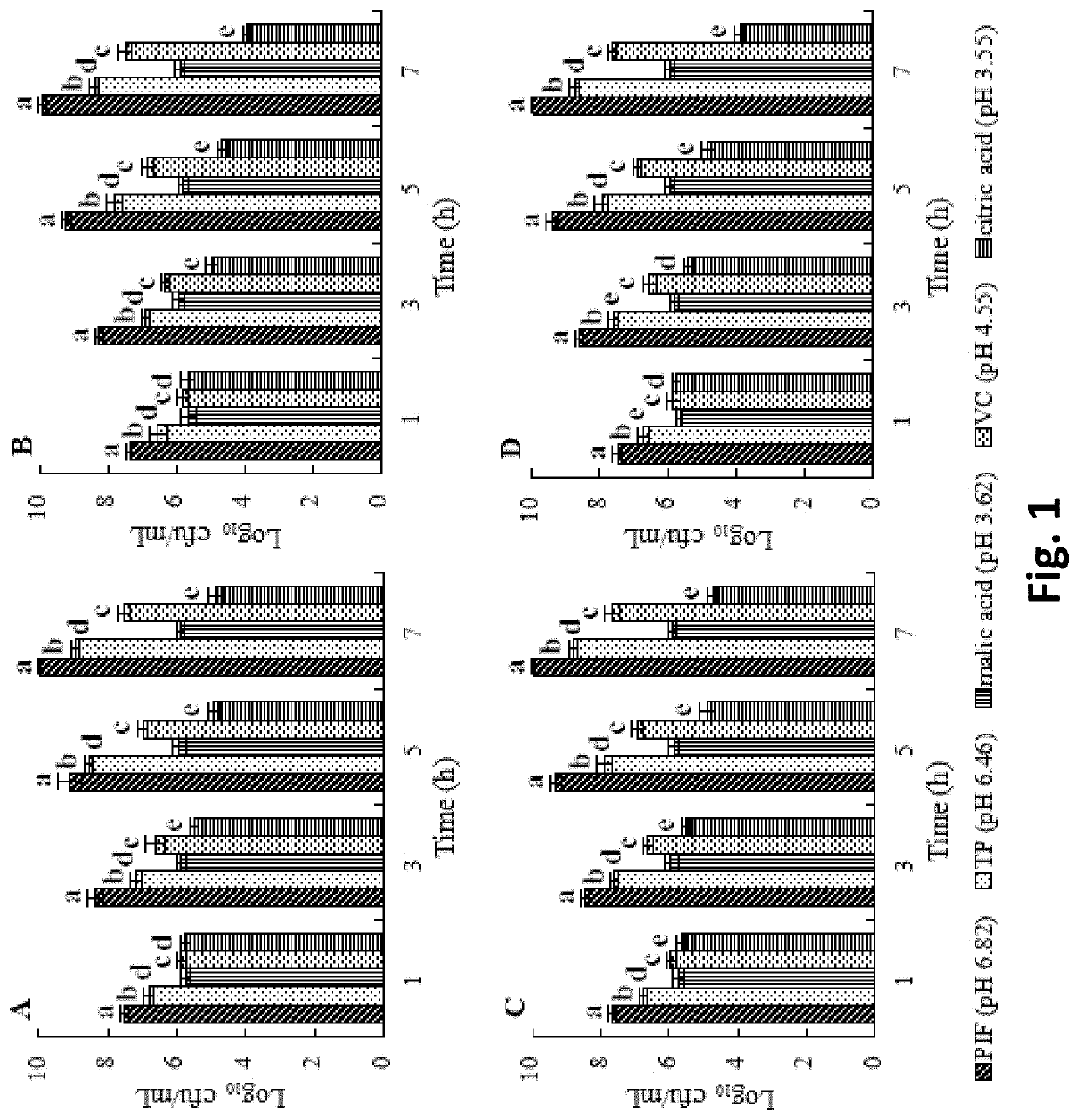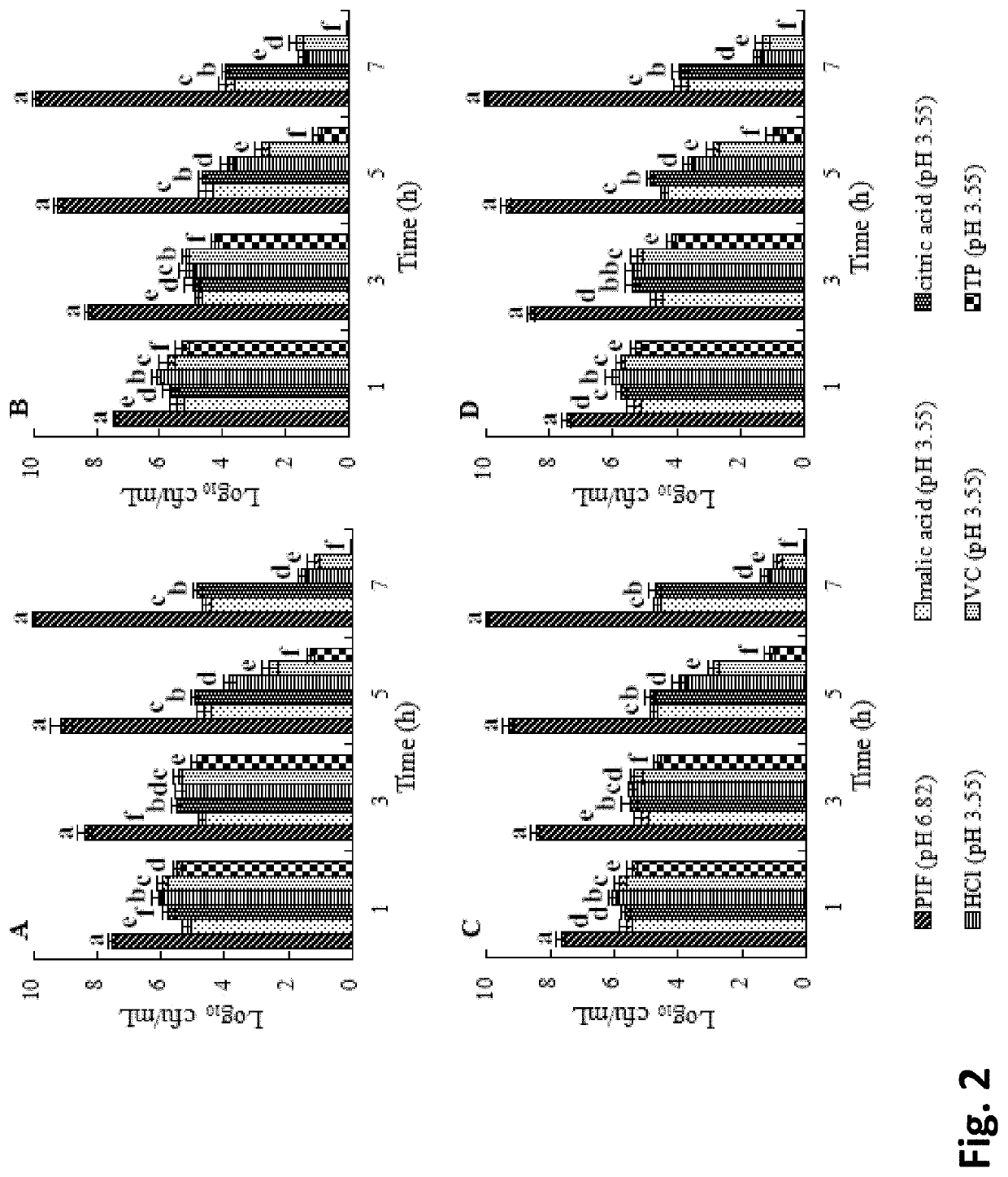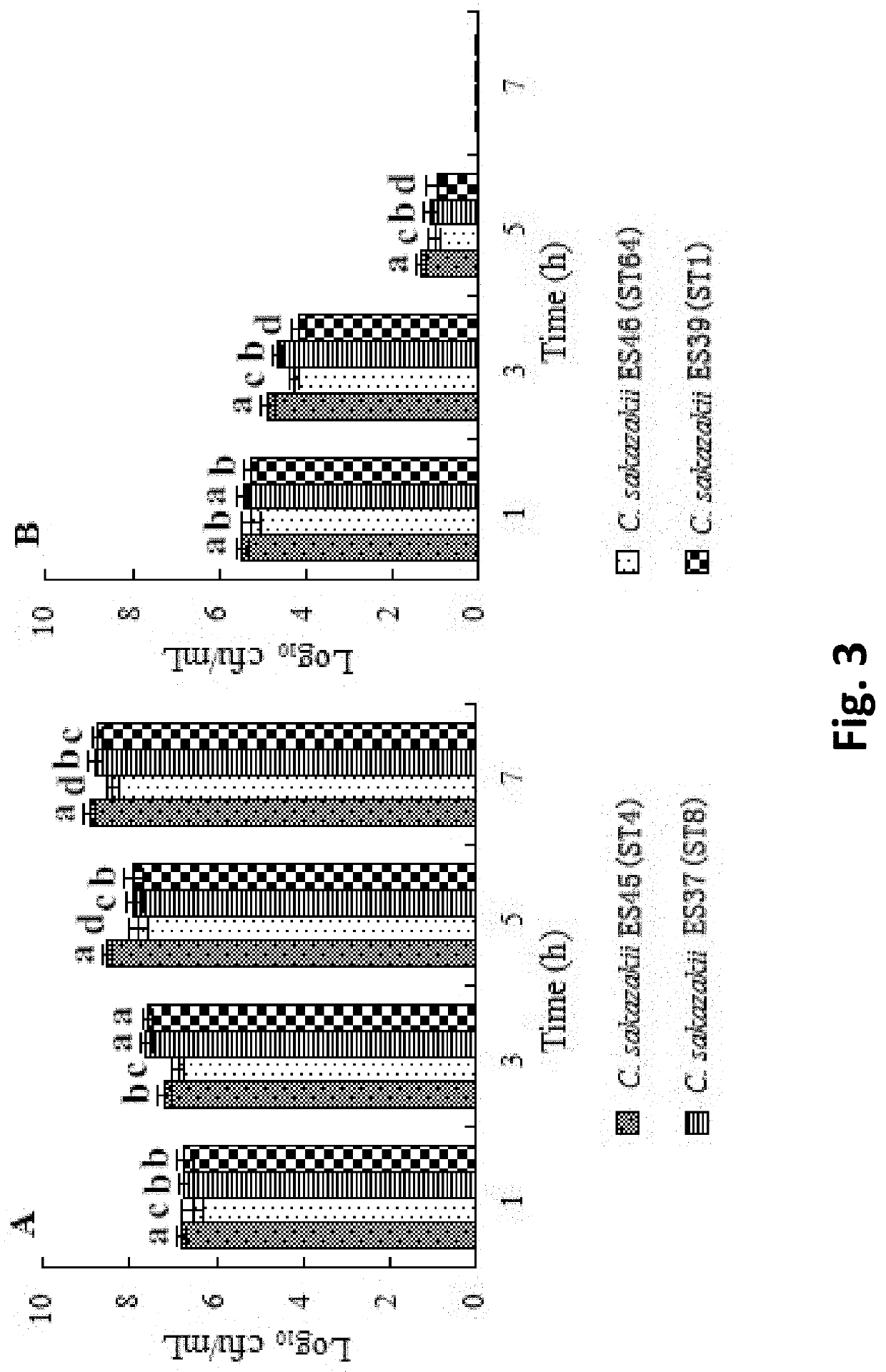Method for inactivating Cronobacter sakazakii
a technology of cronobacter and inactivation method, which is applied in the field of food safety technologies, can solve the problems of reducing affecting the survival rate of cronobacter, and affecting the production environment, so as to prevent resurrection and secondary contamination, improve the control and eliminate the contamination of cronobacter, and be relatively safe to use.
- Summary
- Abstract
- Description
- Claims
- Application Information
AI Technical Summary
Benefits of technology
Problems solved by technology
Method used
Image
Examples
example 6
ricidal Effects of Tea Polyphenol in PIF Solution with Different pHs
[0061]15 g PIF was reconstituted in 100 mL of sterile distilled water, and 5 mg / mL TP was added to the rehydrated PIF, and shaken gently to make sure that is was fully dissolved. The initial pH of rehydrated PIF was 6.46, and was adjusted to pH 3, 3.5, 4, 5 or 6 with 4 M HCl. 8.0 Log CFU / mL cell suspensions of C. sakazakii strains were added to TP solutions with different pHs, and the final concentration was approximately 7.0 Log CFU / mL. The cell suspensions with different treatments was incubated at 37° C. for 7 hr, and shaken to make sure that they were homogeneous. After serial dilution with the saline, 0.1 mL of appropriately diluted cultures were spread-plated on TSA plates in duplicate and incubated upside down at 37° C. overnight. Finally, the growth of Cronobacter sakazakii was observed. Cells cultured in the normal saline was used as control groups. The results were shown in table 3.
[0062]
TABLE 3Comparison ...
example 7
Solution (3%) to Clean PIF Production Equipment and Environment
[0067]3 g tea polyphenols was dissolved in 100 mL NS. Equipment, pipeline and environment in the factory, which have been already identified to be contaminated by Cronobacter sakazakii, were treated with above TP solution for 60 min After the TP treatment, no bacteria were detected in samples taken from the equipment, pipeline and environment previously contaminated by Cronobacter sakazakii. The bactericidal effect of the TP solution was quite obvious. To apply the TP treatment, the TP solution was used to wash the equipment and the pipeline, and to spray into the surrounding environment.
example 8
Solution (2%) to Clean PIF Production Equipment and Environment
[0068]2 g tea polyphenols was dissolved in 100 mL NS. Equipment, pipeline and environment in the factory were treated with above TP solution for 60 min, which have been already identified to be contaminated by Cronobacter sakazakii. After the TP treatment, no bacteria were detected in samples taken from the equipment, pipeline and environment previously contaminated by Cronobacter sakazakii. The bactericidal effect of the TP solution was quite obvious. To apply the TP treatment, the TP solution was used to wash the equipment and the pipeline, and to spray into the surrounding environment.
PUM
 Login to View More
Login to View More Abstract
Description
Claims
Application Information
 Login to View More
Login to View More - R&D
- Intellectual Property
- Life Sciences
- Materials
- Tech Scout
- Unparalleled Data Quality
- Higher Quality Content
- 60% Fewer Hallucinations
Browse by: Latest US Patents, China's latest patents, Technical Efficacy Thesaurus, Application Domain, Technology Topic, Popular Technical Reports.
© 2025 PatSnap. All rights reserved.Legal|Privacy policy|Modern Slavery Act Transparency Statement|Sitemap|About US| Contact US: help@patsnap.com



